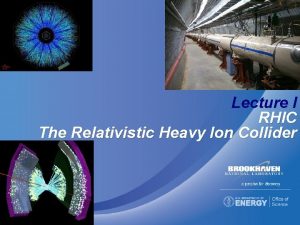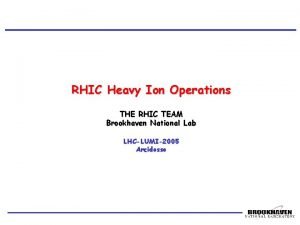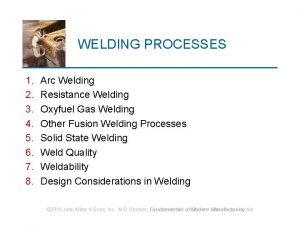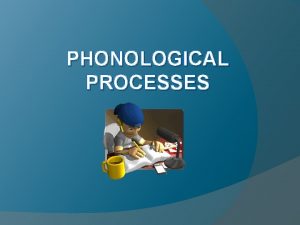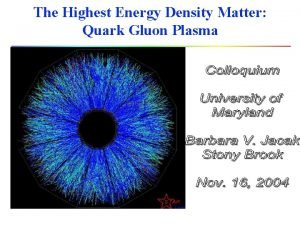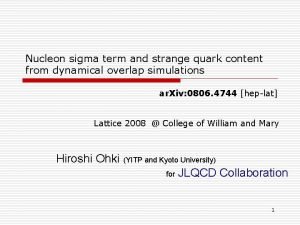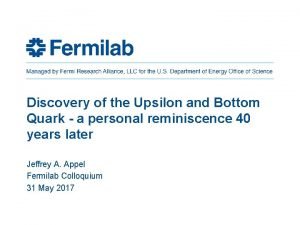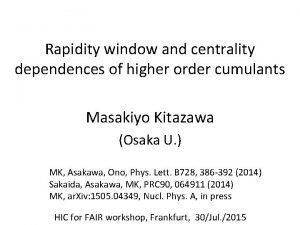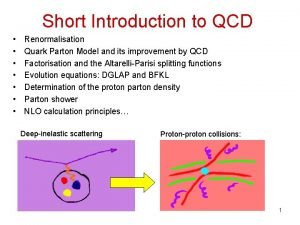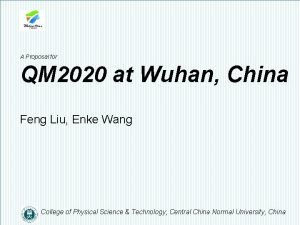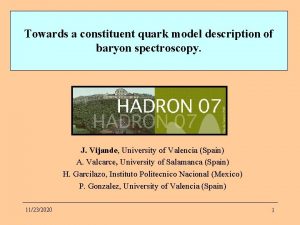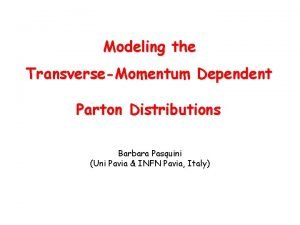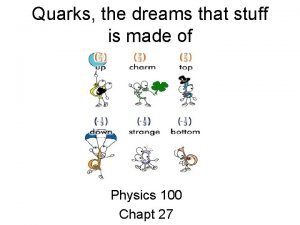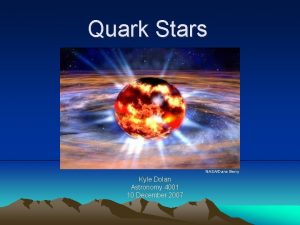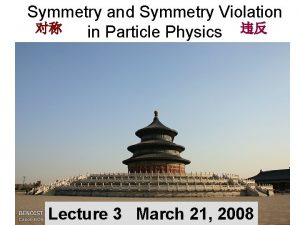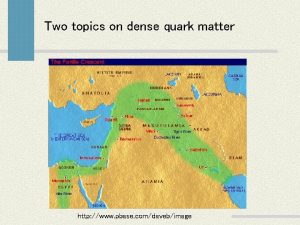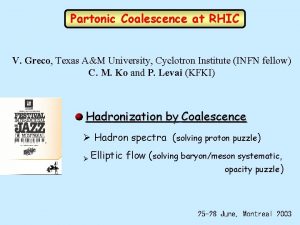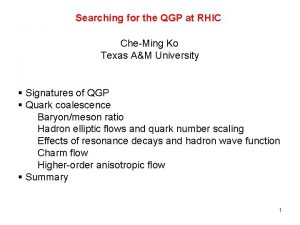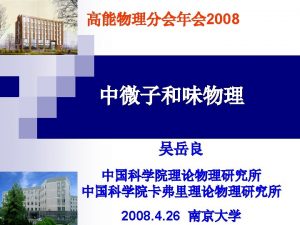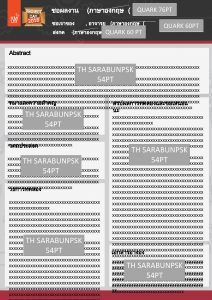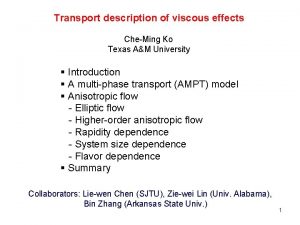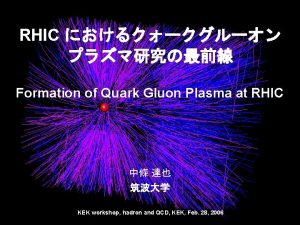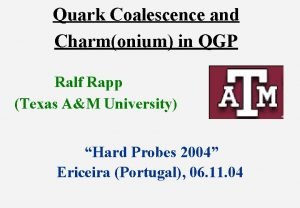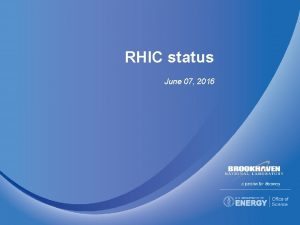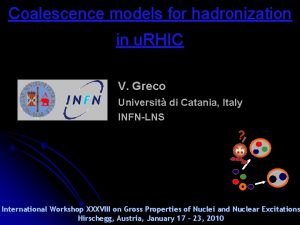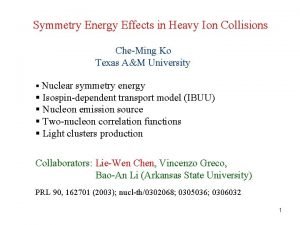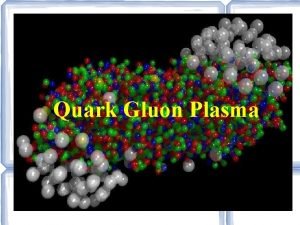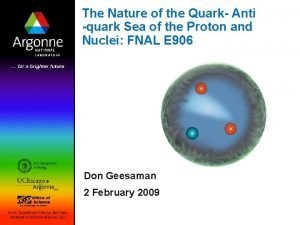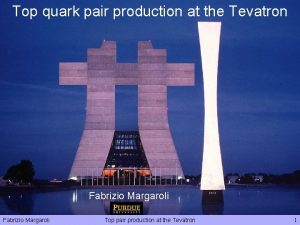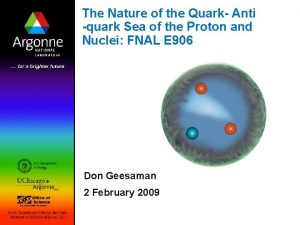Quark Coalescence at RHIC CheMing Ko Texas AM





















- Slides: 21

Quark Coalescence at RHIC Che-Ming Ko Texas A&M University § Introduction § Quark coalescence Baryon/meson ratio Hadron elliptic flows and quark number scaling Effect of resonance decays Charm flow Higher-order anisotropic flows § Coalescence in transport model § Exotica (pentaquark baryon) § Entropy problem § Summary Thanks to: Chen, Greco, Levai, Rapp 1

Coalescence model in heavy ion collisions § Extensively used for light clusters production § First used for describing hadronization of QGP by Budapest group § Currently pursued by Oregon: Hwa, Yang (PRC 66 (02) 025205), ……… Duke-Minnesota: Bass, Nonaka, Meuller, Fries (PRL 90 (03) 202303; PRC 68 (03) 044902 ) Ohio and Wayne States: Molnar, Voloshin (PRL 91 (03) 092301; PRC 68 (03) 044901) Texas A&M: Greco, Levai, Rapp, Chen, Ko (PRL (03) 202302; PRC 68 (03) 034904) § Most studies are schematic, based on parametrized QGP parton distributions § Study based on parton distributions from transport models has been developed by TAMU group (PRL 89 (2002) 152301; PRC 65 (2002) 034904 ) and is now also pursued by D. Molnar (nucl th/0406066) 2

Coalescence model PRL 90, 202102 (2003); PRC 68, 034904 (2003) Number of hadrons with n quarks and/or antiquarks Spin-color statistical factor e. g. Quark distribution function Coalescence probability function For baryons, Jacobi coordinates for three-body system are used. 3

Monte-Carlo method Introduce quark probabilities Pq(i) according to their transverse momentum and spatial distributions Allow to treat all quarks on same footing 4

Parton transverse momentum distributions • Thermal QGP • Power-law minijets • Choose T=170 Me. V que nch e d soft hard L/l=3. 5 P. Levai et al. , NPA 698 (02) 631 Consistent with data (PHENIX) 5

Other inputs or assumptions • Minijet fragmentation via KKP fragmentation functions • Gluons are converted to quark-antiquark pairs with equal probabilities in all flavors. • Quark-gluon plasma is given a transverse collective flow velocity of β=0. 5 c, so partons have an additional velocity v(r)=β(r/R). • Minijet partons have current quark masses mu, d=10 Me. V, ms=175 Me. V, while QGP partons have constituent quark masses mu, d=300 Me. V, ms=475 Me. V. • Use same coalescence radii for all hadrons, i. e. , Δx=0. 85 fm and Δp=0. 24 Ge. V. 6

Pion and proton spectra Au+Au @ 200 AGe. V (central) Similar results from other groups Oregon: parton distributions extracted from pion spectrum Duke group: no resonances and s+h but use harder parton spectrum 7

Baryon/meson ratios coalescence BM fragmentation Quark coalescence enhances baryons production at intermediate transverse momentum 8

Elliptic flows Quark v 2 extracted from pion and kaon v 2 using coalescence model 9

Naïve quark coalescence model Only quarks of same momentum can coalescence, i. e. , Δp=0 Quark transverse momentum distribution Meson elliptic flow Quark number scaling of hadron v 2 (except pions): Baryon elliptic flow same for mesons and baryons 10

Effects due to wave function and resonance decays Wave function effect Effect of resonance decays Wave fun. + res. decays 11

Charm spectra Charm quark D meson J/ψ T=0. 72 Ge. V T=0. 35 -0. 50 Ge. V Bands correspond to flow velocities between 0. 5 and 0. 65 NJ/ψ =2. 7. 10 -3 NJ/ψ =0. 9. 10 -3 12

Charmed meson elliptic flow S. Kelly, QM 04 V 2 of electrons Greco, Rapp, Ko, PLB 595 (04) 202 13

Effect of higher-order parton anisotropic flows Including 4 th order quark flow Kolb, Chen, Greco, Ko, PRC 69 (2004) 051901 Meson elliptic flow Baryon elliptic flow 14

Higher-order anisotropic flows Data can be described by a multiphase transport (AMPT) model Parton cascade Data 15

A multiphase transport model Lin, Pa. L, Zhang, Li &Ko, PRC 61, 067901 (00); 64, 041901 (01) • Initial conditions: HIJING • Parton evolution: ZPC • Hadronization: Lund string model for default AMPT Coalescence model for string melting scenario • Hadronic scattering: ART String melting: PRC 65, 034904 (02); PRL 89, 152301 (02) • Convert hadrons from string fragmentation into quarks and antiquarks • Evolve quarks and antiquarks in ZPC • When stop interacting, combine nearest quark and antiquark to meson, and nearest three quarks to baryon, • Hadron flavors are determined by quarks’ invariant mass 16

Quark elliptic flows from AMPT • p. T dependence of charm quark v 2 is different from that of light quarks • At high p. T, charm quark has similar v 2 as light quarks • Charm elliptic flow is also sensitive to parton cross sections 17

Pseudorapidity dependence of v 1 and v 2 • String melting describes data near mid-rapidity (| |<1. 5) • At large rapidity (| |>3), hadronic picture works better 18

Θ+ production in heavy ion collisions Chen, Greco, Ko, Lee and Liu, nucl-th/0308006 Quark coalescence model with quark distribution function and Theta+ Wigner function Take σ=0. 86 fm (RΘ~0. 9 fm) gives NΘ~0. 64, reduced to 0. 19 by relativistic correction and sensitive to the Θ+ wave function Compare to ~ 0. 9 (Randrup, PRC 68) and ~ 0. 4 (Letessier et al, PRC 68) 19 from statistical model

Entropy For non-relativistic system For g→π assuming mg=mπ 70% decrease Coalescence model 16% decrease But energy is not conserved ΔE/E~ 18% Need to take into account binding effect. 20

Summary • Hadronization via parton coalescence seems to work well in understanding observed hadron yields and transverse momentum spectra as well as their elliptic flows. • Coalescence of minijet partons with partons from QGP is an alternative mechanism for hadronization of minijet partons. • Incorporation of parton coalescence in transport models is useful. For QGP partons, it has already been included in the AMPT model (Lin et al. , PRC 65, 034904 (2002); PRL 89, 152301 (2002)). Need to include minijet partons as well. 21
 Orbital revolution
Orbital revolution Rhic brookhaven
Rhic brookhaven Applications of smaw
Applications of smaw Rhic ags users meeting 2020
Rhic ags users meeting 2020 Linking vowel to vowel examples
Linking vowel to vowel examples Rhic
Rhic Coalescence emulsi adalah
Coalescence emulsi adalah Quark gluon
Quark gluon Sigma quark composition
Sigma quark composition Quark names
Quark names Quark names
Quark names Quark gluon plasma
Quark gluon plasma Quark parton model
Quark parton model Quark matter 2022
Quark matter 2022 Constituent quark model
Constituent quark model Quark model
Quark model Quark types
Quark types Quark gluon
Quark gluon Quark astronomy
Quark astronomy Quark physics wordle
Quark physics wordle A charm quark has a charge of approximately
A charm quark has a charge of approximately Quark gluon
Quark gluon
